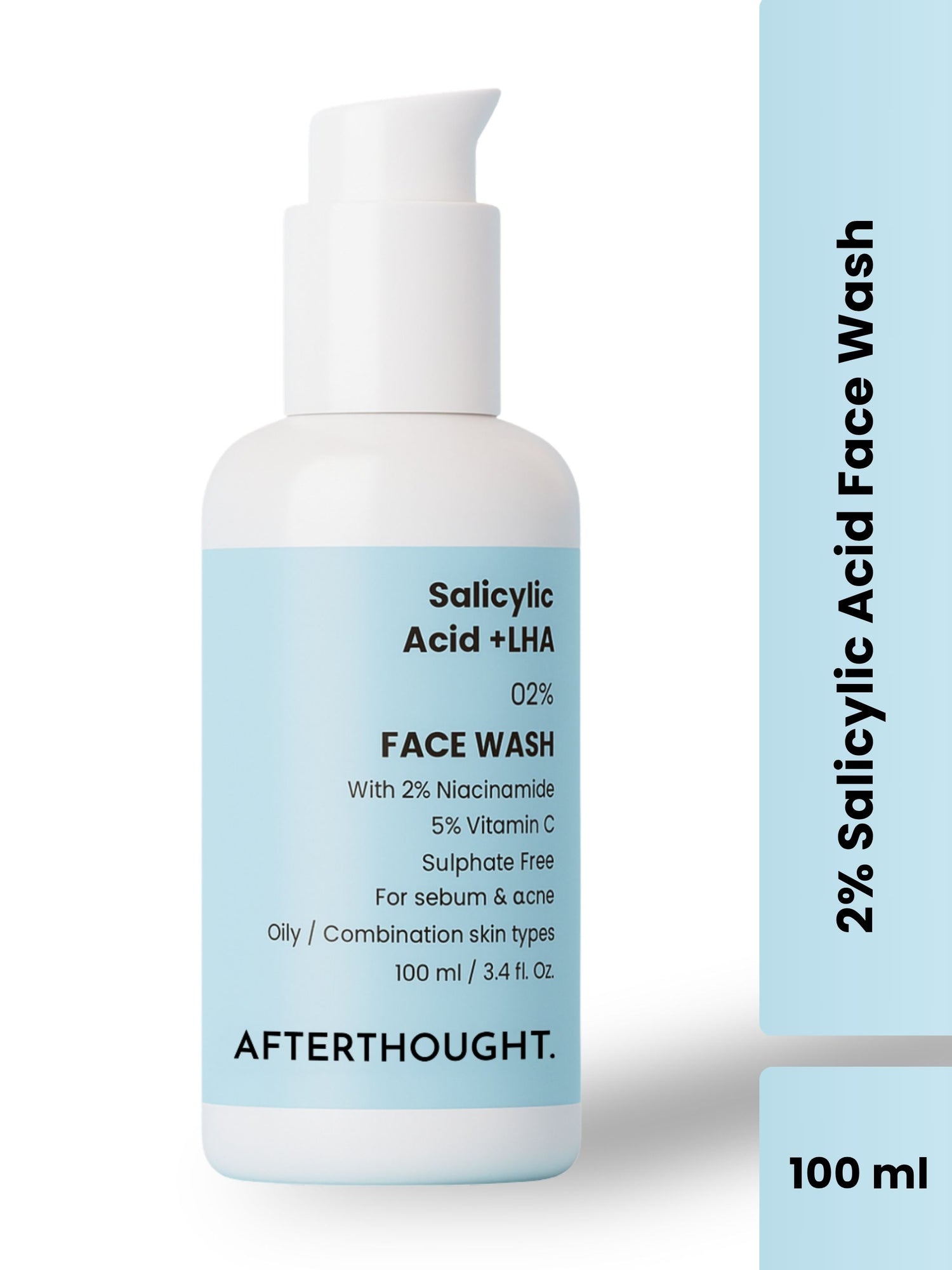How To Exfoliate Your Legs at Home?
Afterthought IndiaExfoliating your legs is an essential part of skincare that helps to remove dead skin cells, leaving your skin smooth, soft, and radiant.
Regular exfoliation can also prevent ingrown hairs, improve circulation, and ensure that your skin absorbs moisturizers and other treatments more effectively.
In this guide, we'll walk you through how to exfoliate your legs at home, using techniques and ingredients that are both effective and easy to find.
Understanding the Importance of Exfoliation
Our skin naturally sheds dead skin cells, but sometimes this process needs a little help. When dead skin cells accumulate on the surface, they can lead to rough, dry patches and clogged pores, which may cause ingrown hairs or even breakouts. Exfoliating helps to remove these dead cells, promoting healthier skin and giving your legs a fresh, rejuvenated appearance.
Types of Exfoliation
There are two main types of exfoliation: physical and chemical.
- Physical Exfoliation involves manually scrubbing the skin with an abrasive substance or tool. Common physical exfoliants include sugar scrubs, loofahs, or exfoliating mitts.
- Chemical Exfoliation uses acids or enzymes to dissolve dead skin cells. Ingredients like alpha-hydroxy acids (AHAs) or beta-hydroxy acids (BHAs) are commonly found in chemical exfoliants.
For your legs, physical exfoliation is often more practical, though chemical exfoliants can also be highly effective, particularly for those with sensitive skin.
Preparing Your Skin
Before you start exfoliating, it’s essential to prepare your skin properly:
- Cleanse Your Legs: Begin by washing your legs with warm water and a gentle body wash. This step removes dirt, oil, and sweat, allowing the exfoliant to work more effectively.
- Soften the Skin: Soak your legs in a warm bath or shower for about 5-10 minutes. This helps to soften the skin, making the exfoliation process smoother and less abrasive.
Exfoliating Your Legs
Now that your skin is prepared, you can begin exfoliating. Here are some methods you can use:
Sugar Scrub
Ingredients:
- 1/2 cup of granulated sugar
- 1/4 cup of olive oil or coconut oil
- Optional: A few drops of essential oil for fragrance
Instructions:
- Mix the sugar and oil in a bowl until they form a paste.
- Apply the scrub to your legs, massaging in circular motions with your hands or a washcloth.
- Focus on rough areas like the knees and ankles.
- Rinse off with warm water and pat your skin dry.
Salt Scrub
Ingredients:
- 1/2 cup of sea salt
- 1/4 cup of olive oil or almond oil
- Optional: A few drops of essential oil
Instructions:
- Combine the sea salt and oil in a bowl.
- Gently scrub your legs in circular motions, being careful not to apply too much pressure, as salt can be more abrasive than sugar.
- Rinse thoroughly with warm water and pat dry.
Baking Soda Paste
Ingredients:
- 3 tablespoons of baking soda
- Water
Instructions:
- Mix the baking soda with enough water to form a thick paste.
- Apply the paste to your legs, scrubbing gently in circular motions.
- Focus on areas where the skin is rough or bumpy.
- Rinse off with warm water and dry your legs with a towel.
Dry Brushing
Instructions:
- Use a natural-bristle brush specifically designed for dry brushing.
- Starting from your ankles, brush upward in long, sweeping motions toward your heart.
- Pay special attention to areas prone to rough skin, such as your knees and ankles.
- Brush each section of your legs 2-3 times before moving on to the next area.
Chemical Exfoliation
Ingredients:
- A lotion or serum containing AHAs like glycolic acid or BHAs like salicylic acid.
Instructions:
- Apply the product to clean, dry legs, following the instructions on the packaging.
- Allow the product to absorb into the skin before applying moisturizer.
Chemical exfoliants can be used once or twice a week, depending on your skin’s sensitivity.
Post-Exfoliation Care
After exfoliating, it’s crucial to moisturize your skin to keep it hydrated and smooth:
- Rinse Thoroughly: Make sure to rinse off any remaining exfoliant completely, using warm water.
- Moisturize: Apply a rich, hydrating lotion or body butter to your legs immediately after exfoliating. This helps lock in moisture and soothe the skin.
- Sun Protection: If you’re planning to expose your legs to the sun, apply a broad-spectrum sunscreen. Exfoliated skin can be more sensitive to UV rays, making it more susceptible to sunburn.
How Often Should You Exfoliate?
The frequency of exfoliation depends on your skin type:
- Normal to oily skin: Exfoliate 2-3 times a week.
- Sensitive or dry skin: Exfoliate once a week to avoid irritation.
Always listen to your skin—if it feels sore, red, or overly dry after exfoliating, reduce the frequency or switch to a gentler method.
Conclusion
Exfoliating your legs at home is a simple yet effective way to maintain smooth, healthy skin. By incorporating regular exfoliation into your skincare routine, you’ll enjoy softer, more radiant legs, free from rough patches and dead skin buildup.
Whether you prefer a physical scrub, dry brushing, or a chemical exfoliant, the key is consistency and gentle care. With the right approach, your legs will feel as good as they look.
Also Read: How Often Should You Exfoliate Your Face?

